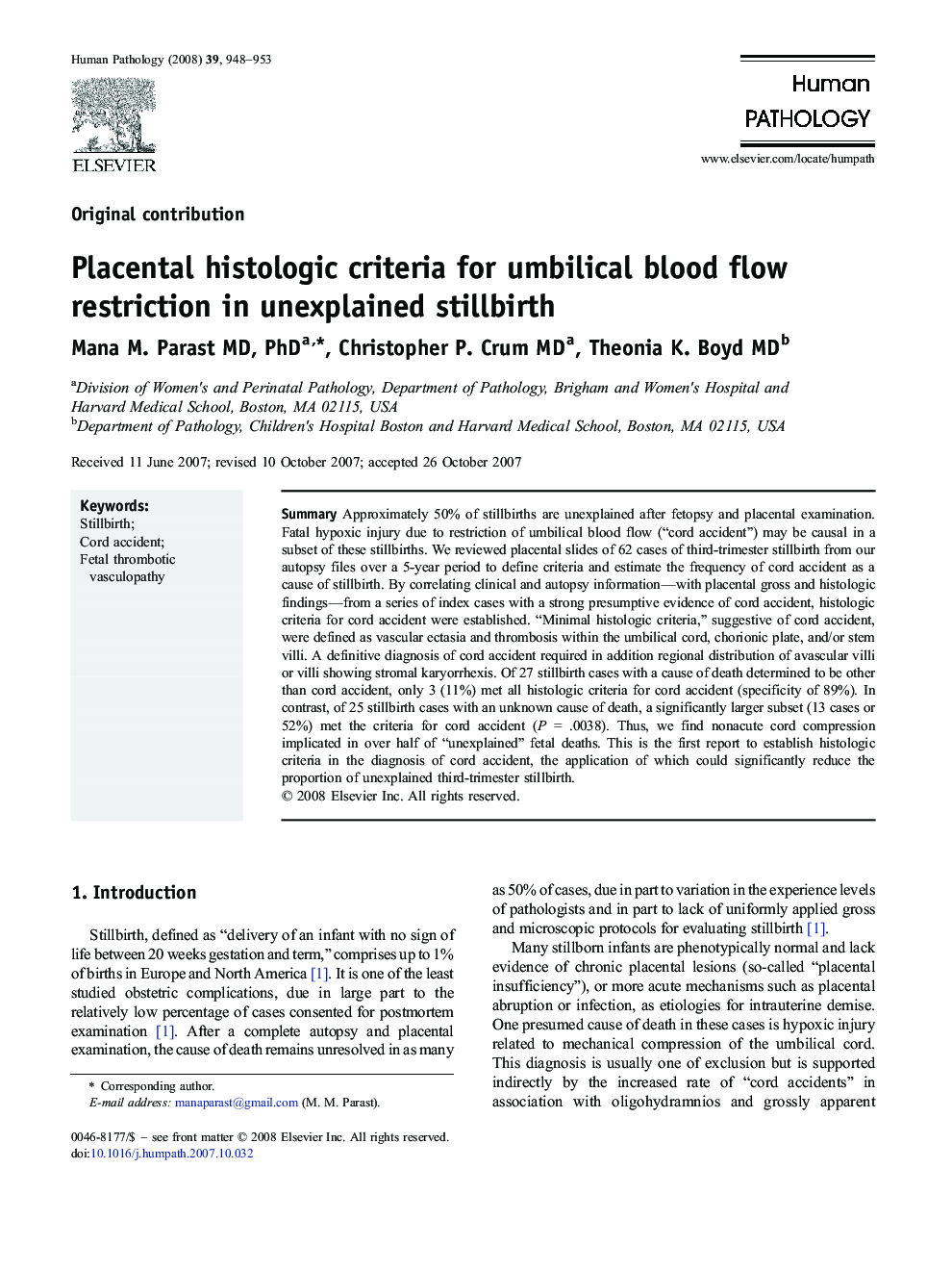| Article ID | Journal | Published Year | Pages | File Type |
|---|---|---|---|---|
| 4134724 | Human Pathology | 2008 | 6 Pages |
SummaryApproximately 50% of stillbirths are unexplained after fetopsy and placental examination. Fatal hypoxic injury due to restriction of umbilical blood flow (“cord accident”) may be causal in a subset of these stillbirths. We reviewed placental slides of 62 cases of third-trimester stillbirth from our autopsy files over a 5-year period to define criteria and estimate the frequency of cord accident as a cause of stillbirth. By correlating clinical and autopsy information—with placental gross and histologic findings—from a series of index cases with a strong presumptive evidence of cord accident, histologic criteria for cord accident were established. “Minimal histologic criteria,” suggestive of cord accident, were defined as vascular ectasia and thrombosis within the umbilical cord, chorionic plate, and/or stem villi. A definitive diagnosis of cord accident required in addition regional distribution of avascular villi or villi showing stromal karyorrhexis. Of 27 stillbirth cases with a cause of death determined to be other than cord accident, only 3 (11%) met all histologic criteria for cord accident (specificity of 89%). In contrast, of 25 stillbirth cases with an unknown cause of death, a significantly larger subset (13 cases or 52%) met the criteria for cord accident (P = .0038). Thus, we find nonacute cord compression implicated in over half of “unexplained” fetal deaths. This is the first report to establish histologic criteria in the diagnosis of cord accident, the application of which could significantly reduce the proportion of unexplained third-trimester stillbirth.
